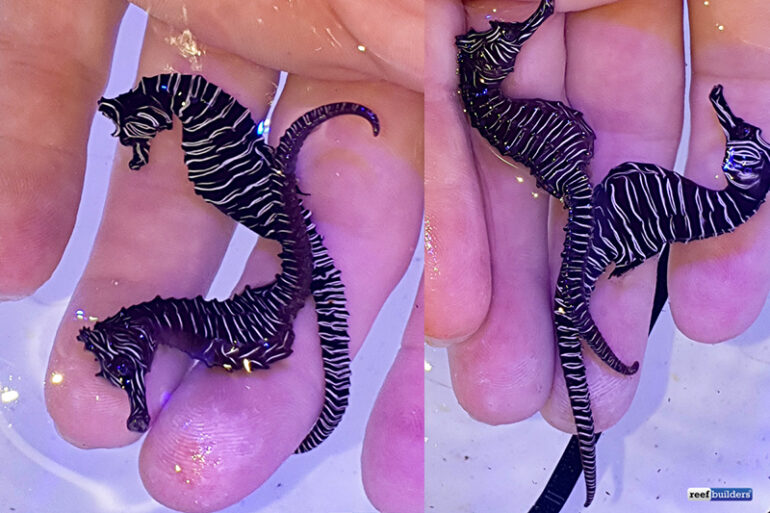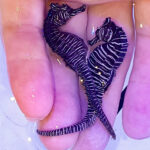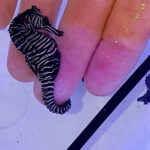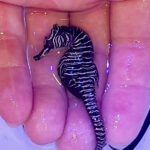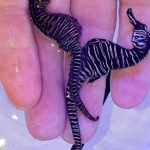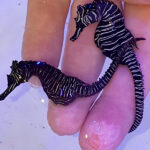Zebra seahorses are a fish that seems like it shouldn’t exist but it does, barely. What we mean by that is that there are examples of seahorses in the wild with perfect black and white stripes, one species is even named Hippocampus zebra, but for some reason these are very rarely seen by divers, and nonexistent in the aquarium hobby, until now!
If you know where most of the Lennardi wrasses and Rainfordia basslets come from, then you won’t be surprised to learn that Ocean Reefs Marine Aquariums is the source for the first new specimens of zebra seahorses in dozens of years. Sure there have been a few one off specimens collected on both coasts of Australia and they’ve been spotted in Papua New Guinea as well but the two pairs fished up by Simon Hawke are the first, well-documented zebra seahorses in modern times.
Interestingly, there are two species of seahorses that have very bold black and white zebra striping, Hippocampus zebra from Australia’s eastern coast, and Hippocampus montebelloensis from the West Coast of Australia. Simplifying matters, some taxonomists consider the montbello seahorse to be a synonym of Hippocampus zebra, so we’ll simply proceed with the assumption that these are the seahorses named after the African mammal.
This is not the first time that Simon has collected the zebra seahorse but it’s been around 15 years since he collected just one, and this time he discovered a curious habitat of drifting seaweed with four specimens! This is a strange observation because the last we checked, most seaweeds are greens, reds and brown colors but it turns out that the zebra seahorse is uniquely adapted to live among the arms of black and white crinoids or feather stars as noted by Fishes of Australia.
The collection of two pairs of zebra seahorses is a very exciting development for the saltwater aquarium hobby because as you know, seahorses are one of the easiest marine fish to breed, and who wouldn’t want to have a tank of zebra striped seahorses? The one reservation we have is that seahorses are known to adapt to their environment, changing their color and pattern to match and blend in with their host organism such as sponges or coral, but nothing says that you couldn’t give the next generation of zebra seahorses some artificial zebra striped ornaments to encourage that bold appearance.
Huge thanks to Simon Hawke for spicing up the world of exotic marine fish with something really novel and unique, and congratulations on finding a few specimens to spark the imagination of saltwater aquarium fish breeders, and we look forward to learning more about these very special fish in the near future.


